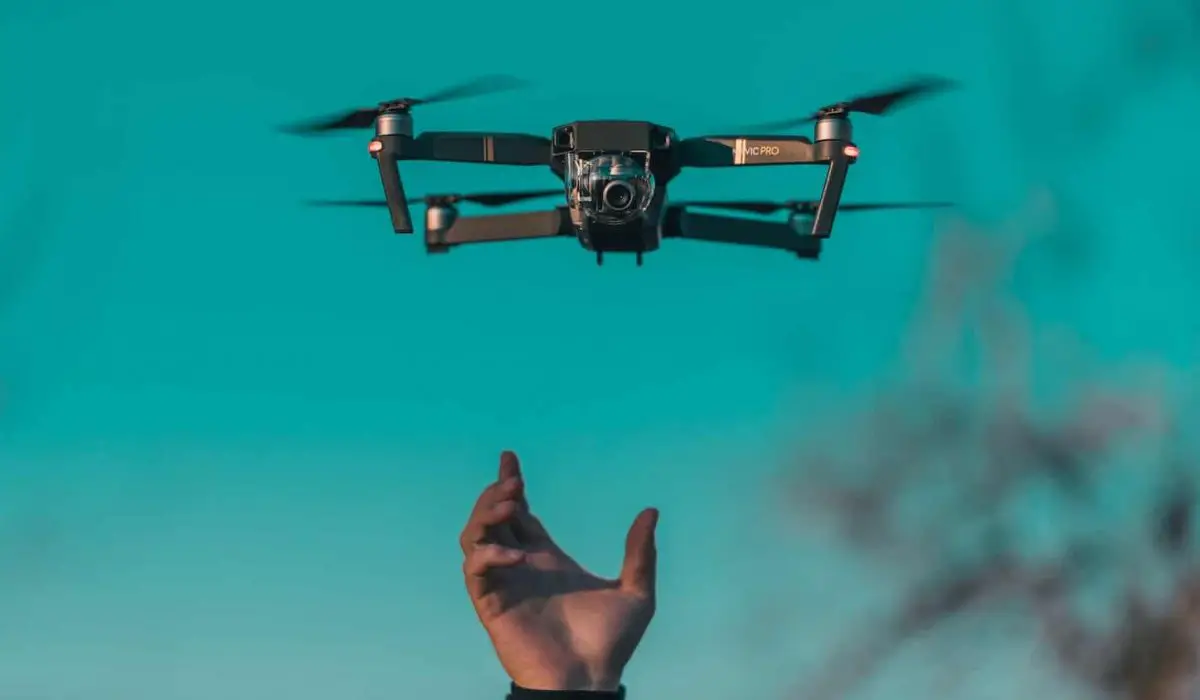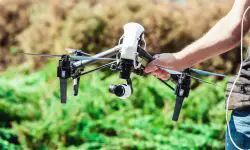Are you weighing the pros and cons of drones as an outdoor hobby? Perhaps you’re an industry professional looking to replace old equipment with drones.
Regardless, you don’t have to possess skills or training to use a drone. Drones are also known as unmanned aerial vehicles (UAVs). Users operate them with handheld controllers.
UAVs are becoming more accessible to the public than ever before. You can find them in different sizes, and they come with various features, depending on the type you choose.
The pros of drones include great visualization, added convenience, and safety preservation. The cons of drones include privacy violations and threats to humans and animals.
The pros and cons depend on how you intend to use it. This article will reveal a greater insight into the benefits and drawbacks of UAVs. Let’s explore.
The Pros
Overall, most people can use drones without hassle. Plus, drones are more affordable than in previous years. They’re also no longer reserved for law enforcement or military branches. Consider the following benefits:
Crisp Visuals
Drones provide an aerial mapping system from the sky. You can also take high-quality videos and photos from above and receive imaging data from a monitor. Additionally, drones offer 2D and 3D imaging, allowing professionals to flesh out projects in greater detail.
Users can also integrate data via stellar visualization. As a result, you can do much more with the data you have. You can use high-quality visuals to achieve the following
- Live-streaming events and momentous occasions
- Capturing personal moments
- Fostering a comprehensive view of large-scale infrastructure
Additionally, drones can capture detailed images (i.e. 4K) of damaged areas in the form of cracks or breaches.
Minimizing Danger
You’ll see aerial drones in many industries, such as:
- Oil and gas
- Agriculture
- Mining
- Roofing
- Construction
All of these dangers contain an element of danger. However, drones can reach areas that are impenetrable to humans.
- Example: In the event of an offshore oil rig explosion, cleanup crews can use drones to survey the damage remotely. From there, they can craft viable strategies to contain the damage.
Drones can also cover more ground when disasters occur. Many crews use drones to cover oil pipeline leakages that can span miles.
Plus, drones enhance inspections and prevent inspectors from entering hazardous areas. Inspections near pipelines and refineries are dangerous, increasing the likelihood of accidents and injury. Drones cover more ground from the air and can eliminate the human presence.
Reducing Time
Industry professionals also rely on drone technology to reduce staff and save time. A single drone can replace an entire crew. UAVs are a good option for companies operating on tight budgets.
They also allow users to do more in less time. Individuals use them to streamline workflows, allowing them to finish faster.
Drones are especially useful for land surveyors that need to survey an area within a short timeframe. For instance, land surveys are fraught with delays without the right technology in place. Land survey delays can also delay the overall project.
Regardless of the project, drones can assess more land using multiple angles. Best of all, drone operators can make the data accessible to clients and organizations in a day or less.
The Cons
A notable con is that drones can pose a direct threat to public safety. Additionally, the laws and regulations on drone use are unclear. Therefore, you may find yourself on the wrong end of the law without knowing it. Consider the drawbacks in more detail:
Violations of Privacy Rights
Drones prioritize security over the rights of individuals. Critics note that governments and law enforcement agents can use drones to spy unlawfully on citizens. Law enforcement agencies can use drones to collect evidence and promote public safety.
The Fourth Amendment gives Americans the right to privacy. Drones can violate Fourth Amendment rights because the government cannot pry into a person’s affairs or belongings without just cause.
Government entities aside, any person can use a drone to spy on you. Aviation laws prevent users from flying drones close to your home.
The problem is that smaller drones are not easily detectable, allowing operators to spy on people undetected. Further, ambiguous laws allow spies to escape justice.
Public Safety Threat
Supporters advocate drones to promote public safety, but they can injure someone or damage property.
This is especially true in the hands of an inexperienced user. Drones are easy to use, but they’re easy to misuse. If not careful, operators could also crash drones against power lines and other types of infrastructure.
Drones are also vulnerable to hacking, allowing hackers to injure people or cause damage.
Threats to Wildlife
Birds are the most common victims of aerial drones, as they can collide into them. Plus, birds may attack the drone, especially if it flies to close to a nest. UAVs can also collide against trees and other animals.
Animals can damage your drone beyond repair, and you may lose sight of your drone when flying it near wooded areas.
The Pros and Cons of Drones: What’s the Verdict?
In the right hands, they can be effective tools that save time and money. They can capture photos and videos in less time. They’re also a useful asset as inspectors survey hazardous areas.
However, drones can violate a person’s privacy rights. In the wrong hands, a person can unlawfully spy on someone. A novice handler can also cause accidents and injuries.
Are you thinking about the pros and cons of drones? Click here to learn more about the role of drones in society.




